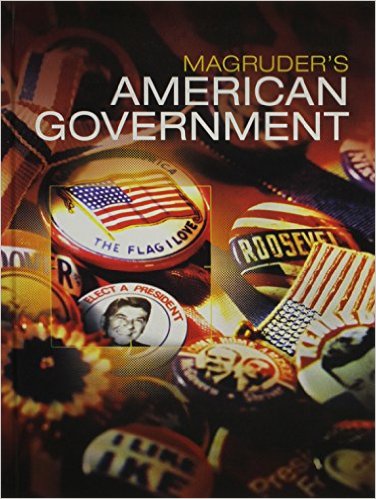
All Solutions
Page 77: Chapter Assessment
Federalist Number 10 warns of the dangers of faction. It was written by James Madison and discusses how the root cause of faction; the urge of every man to argue for and promote his own interests; is impossible to avoid without severe restrictions on liberty. These restrictions would run counter to everything the colonists fought for in the Revolutionary War. Without an acceptable way to control the cause of faction, one must therefore control the impact of faction. Madison writes, “The inference to which are brought is, that the CAUSES of faction cannot be removed, and that relief is only to be sought in the means of controlling its EFFECTS.” ( Federalist Number 10) Madison saw a republican form of government as the cure to the effects of faction.
Federalist Number 39 was also written by James Madison, and further defends the newly designed government as a republic. Note, the term “republican” contained in these papers refers only to a form of government, and not to a political party. Madison defines a republic as, “a government which derives all its powers directly or indirectly from the great body of the people.” He examines the ways in which both the power of the individual and the power of the states are balanced with the national government.
For example, members of The House of Representatives are selected by the individual while members of The Senate are selected by the states. Federalist Number 39 seeks to demonstrate that proposed Constitution strikes a balance between what Madison describes as “ Wholly national or wholly federal.” What this means is that the powers of the central government are derived from individuals acting both independently, and in their capacity as a member of a state. When State Legislatures chose Senators, they were doing so based on power derived from the people of their state. Madison concludes with, “The proposed Constitution, therefore, is, in strictness, neither a national nor a federal Constitution, but a composition of both. In its foundation it is federal, not national; in the sources from which the ordinary powers of the government are drawn, it is partly federal and partly national.” (Federalist Number 39)
In Federalist Number 51 Madison presents the ideas of: 1) independent branches of government and 2) the concept of checks and balances. It is in this essay that Madison writes “If men were angels, no government would be necessary. If angels were to govern men, neither external nor internal controls on government would be necessary.” (Federalist 51) Essentially, if everyone could be guaranteed to do the right thing we wouldn’t have to create this new government in the first place. How does one create a government which can control the worst impulses of men and therefore control itself? The answer is to divide up power and create a system in which each division of government can impose limits over the others.
In Federalist Number 10, Number 39, and Number 51 Madison seeks to convince his readers of the importance and benefits of a republican form of government. To show how the proposed Constitution both protects the rights of the individual, and ensures the ability to govern effectively.
*Everyone is equal and has to be treated the same way.
Everyone has unalienable rights.
The government’s power comes from the consent of the people.
The government protects everyone’s rights.
The people have the right to liberty, life, and the pursuit of happiness.
The people have the right to revolution against abusive government.*
All of us are loyal to King James and are forming this colony in both his honor and the glory of God. To further this goal we pledge to form one society. We will create laws and and choose officers in order to ensure peace, order, and the general good of the colony.
The Mayflower Compact demonstrates that early settlers knew it was important to create a system of laws and practices with the goal of forming one shared society. If no system of governance or laws existed, then there was no protection for the individual from violence or mistreatment of another. The Mayflower Compact states that laws are written and enforced for the general good of the colony. By all pledging to follow the prescribed code of conduct, there was a shared understanding that it would benefit all of the settlers.

